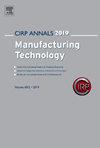三种混合金属增减制造工艺的比较
IF 3.6
3区 工程技术
Q2 ENGINEERING, INDUSTRIAL
引用次数: 0
摘要
这项工作的目的是比较三种不同的混合金属增材减材制造工艺,以使决策和未来的研究。这是通过用316L不锈钢生产相同的工件实现的-摩擦表面,电弧增材制造和激光粉末定向能量沉积。分析了循环时间、资源消耗、变形、能耗、显微组织、硬度和抗拉强度等关键工艺结果。结果表明:摩擦表面由于其固态特性而具有较高的硬度;电弧增材制造提供更短的周期时间和资源消耗;定向能沉积提供接近净形状的几何形状。本文章由计算机程序翻译,如有差异,请以英文原文为准。
Comparison of three hybrid metal additive-subtractive manufacturing processes
The objective of this work is to compare three different hybrid metal additive-subtractive manufacturing processes to enable decision-making and future research. This was achieved by producing the same artifact out of 316L stainless steel with - Friction Surfacing, Wire Arc Additive Manufacturing, and Laser Powder Directed Energy Deposition. Key process outcomes including cycle time, resource consumption, distortion, energy consumption, microstructure, hardness, and tensile strength were analyzed. It was observed that: Friction Surfacing demonstrates higher hardness due to its solid-state nature; Wire Arc Additive Manufacturing offers lower cycle times and resource consumption; and Directed Energy Deposition provides near net shape geometries.
求助全文
通过发布文献求助,成功后即可免费获取论文全文。
去求助
来源期刊

Cirp Annals-Manufacturing Technology
工程技术-工程:工业
CiteScore
7.50
自引率
9.80%
发文量
137
审稿时长
13.5 months
期刊介绍:
CIRP, The International Academy for Production Engineering, was founded in 1951 to promote, by scientific research, the development of all aspects of manufacturing technology covering the optimization, control and management of processes, machines and systems.
This biannual ISI cited journal contains approximately 140 refereed technical and keynote papers. Subject areas covered include:
Assembly, Cutting, Design, Electro-Physical and Chemical Processes, Forming, Abrasive processes, Surfaces, Machines, Production Systems and Organizations, Precision Engineering and Metrology, Life-Cycle Engineering, Microsystems Technology (MST), Nanotechnology.
 求助内容:
求助内容: 应助结果提醒方式:
应助结果提醒方式:


